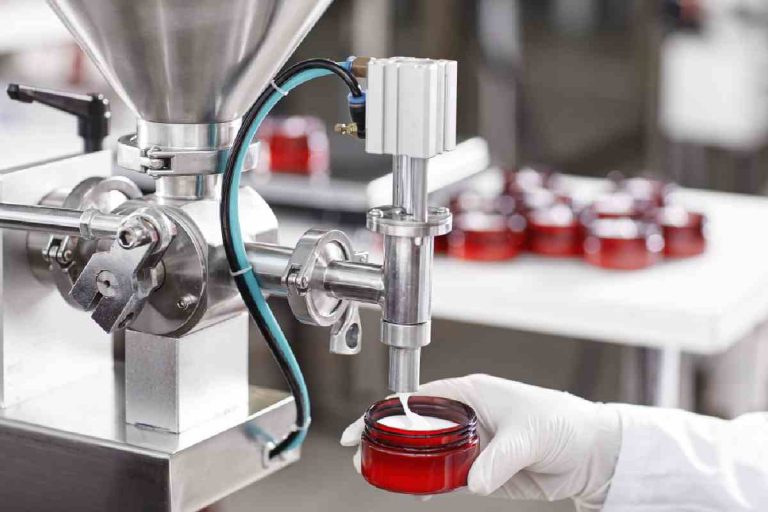Key Highlights
- Nightfall, medically known as nocturnal emission or wet dream, is a natural occurrence in men involving involuntary ejaculation during sleep.
- Hormonal changes during puberty, sexual inactivity, and psychological factors, like stress, often contribute to its frequency.
- It primarily affects adolescent boys and young adults, though men of any age may experience it.
- Frequent nightfall could indicate underlying health issues requiring medical advice but is usually harmless.
- Dispelling myths is vital for understanding this phenomenon and maintaining reproductive health awareness.
- Men can manage nocturnal emissions naturally through lifestyle adjustments like meditation and yoga.
Introduction
Nightfall, which some people call nocturnal emission, happens when a man has an ejaculation while he is asleep. The is more common in young people, especially during adolescence, as the male reproductive system goes through changes. Many get worried or shy about talking about it, but it helps to know what nightfall is and what it means. This can take away the fear and doubt that people may have.
Nightfall can happen because of changes in hormones, when there is not much sexual activity, or sometimes for other reasons. Most of the time, it is just a normal part of the male reproductive system. In this article, we will talk about what nightfall is, why it happens, and some common myths. This will help all of us to know more about it.
Night fall in men Wet Dreams
Has nightfall or wet dream as it is more popularly known, been a matter of embarrassment or worry to you? Though it is very common for men to have had experienced it at some point in their lives, it may become very embarrassing to discuss the matter and men are usually left with several distressing queries regarding the same.
Defining Nightfall in Men and Its Significance
Nightfall, also known as nocturnal emission, is when there is an unexpected release of semen while you sleep. It happens often to young men who are going through puberty. This can also take place at other times in life because of hormonal changes or when there is not enough sexual activity.
It is important to understand nightfall. This can help young men and others accept that it is a natural part of reproductive health. Knowing more about this can also help people notice if something is not normal. For example, if nightfall happens too much or starts to affect your mental or general health, you should get medical advice. This way, you will know what to do and when to talk to a doctor.
What Is Nightfall or Nocturnal Emission?
Nightfall, also called a wet dream, is when semen comes out on its own while you sleep. This can happen because of sexual dreams, being touched or rubbed by sheets, or when the body needs to let go of extra semen. There is arousal or even an orgasm, but you do not have control over it.
For boys growing up, nightfall is very common. It happens because the body goes through hormonal changes and there is more testosterone during puberty. Adults can have wet dreams too, though it usually happens less. Some things like lowered sexual activity or stress can make this happen now and then. Most men stay asleep during nightfall, but some wake up when this takes place or after.
Having nightfall helps your body stay in good reproductive health because it clears out stored semen. This stops any problems that can come if the semen builds up. Nightfall is not harmful, but a normal sign that your sexual organs work as they should. Unless it happens too often, it is not a problem. People need to talk more openly about nightfall so it becomes seen as just a natural thing.
The Cultural Perspective on Nightfall in India
In Indian society, there are many misunderstandings about nightfall. It is often connected to taboos about sex. Some people think it is a perversion or that it is caused by too much masturbation. These ideas lead to shame for many. Ayurveda says that nightfall can happen because of anxiety, stress, or the way you live. It suggests simple things like eating bottle gourd leaves and doing meditation to help.
There is not enough sexual health education in India. That is why many believe myths such as semen loss makes men weak. However, nightfall is just a natural part of puberty and a sign of good reproductive health. Even so, many men find it hard to talk about it. This makes wrong ideas about nightfall stay common.
Ayurveda also gives advice to balance your body using certain foods. This old practice fits well with today’s suggestions, too. People are told to make perineal muscles stronger and not watch or read things that can excite them before going to bed. Now, more people in India are starting to accept and understand that nightfall is normal in male sexuality.
Common Causes of Nightfall
Nightfall happens because of both changes in the body and the mind. When a boy reaches puberty, his body has more hormonal changes. This makes the amount of testosterone in the body go up. The testes start to make semen after these changes. If semen builds up because a person is not having sexual activity or not getting stimulation, the body may let it out by itself during sleep.
Things like too much tension, insomnia, or seeing sexually explicit content can cause these nightfall events too. Men who have frequent nightfall should try meditation, exercise, and changes to what they eat. If you know the causes of nightfall, it will be easier to see what is normal and what could be a problem for your reproductive health.
Biological and Hormonal Changes
Hormonal changes have a big effect on nightfall. When boys start puberty, the male body makes more testosterone. This increase causes the testes to start making sperm. It also raises sexual arousal. Because of this, many young people in that year get nightfall often in this time.
When there is excess sperm stored in the male reproductive system, the body sends a signal. If semen stays in the system longer than normal, the body makes sure to get rid of it. So, if you do not have enough sexual stimulation or regular ejaculation, your body will react by nightfall. This helps the male reproductive system work well.
Taking testosterone supplements without a doctor can also cause nightfall to happen more. These supplements can upset your body’s hormonal balance. So, it is important to see how your body reacts to changes in hormones. If you get frequent nightfall, it could be a sign of a problem. It is best to get help from a health expert and let a doctor look at it.
Knowing about these changes in the reproductive system can help you see why nightfall happens. It is there to keep your reproductive health in check.
Psychological Triggers and Lifestyle Factors
Psychological stress and the habits you have in your daily life play a big part in how often you get nightfall. If you feel a lot of stress or have trouble with insomnia, your body can lose its balance. This can make you more likely to have nightfall. The chance of it happening also goes up if you watch a lot of porn or see too much sexual content. That kind of stuff can build sexual tension at night.
You can try some simple things to lower how often nightfall happens:
- Practice stress-relief, like meditation or yoga, as part of your routine.
- Do not watch porn or look at any sensual content before bed.
- Go to the bathroom and empty your bladder right before sleeping.
- Eat good foods, and try to add bananas and ginger into your meals.
Changing your lifestyle also helps. Regular exercise can make a big difference, and so can doing Kegel exercises to make your perineal muscles stronger. That will help men deal with nightfall better. Adding new habits, like these, into your day can help lower nightfall. It also helps give people better mental and physical health.
Is Nightfall Normal? Separating Myths from Facts
Nightfall is a normal thing that happens to many people. It shows that your sexual health is good. Many people still have false ideas about what nightfall does. In truth, you may have nightfall from time to time, and it is not dangerous. Nightfall helps the body release semen and is a regular part of staying healthy. Some people say that nightfall can hurt your semen levels or lower your strength, but this is not true. You do not lose healthy semen from it.
When you talk about these facts, you help take away the shame around nightfall. It is good for people to learn the truth about reproductive health. But if nightfall happens too often and there are other symptoms, it may mean there is another health issue. It is important to know the difference between facts and myths so you can take good care of your body and your reproductive health.
Frequency and Age of Occurrence
The frequency of nocturnal emissions can be different depending on your age and where you are in your life. Here’s a simple look at how often this can happen based on age:
| Age Group |
Frequency of Nocturnal Emissions (Average) |
| Adolescents (13-17) |
~0.36 times per week |
| Young Adults (18-25) |
~0.24 times per week |
| Adults (26-40) |
~0.18 times per week |
Teenagers are the group that usually has wet dreams most often. This is because puberty and hormonal changes in the body happen for most at this time. Young men may start to see the number go down after these years, as sexual activity tends to go up. For adults, the frequency of nocturnal emissions usually drops more as testosterone levels stay the same and sexual patterns become more steady and usual.
Knowing the average for these groups can help people understand what the normal number is. This also helps to know when to talk to a doctor. It may be good to check in with one, for example, if the frequency goes up a lot, or if you start having pain or feel very tired after them.
Addressing Common Misconceptions About Nightfall
Many people believe wrong things about nightfall, and it can make them worry for no reason. Let’s clear up some of these myths:
- Nightfall causes infertility: This is not true. The semen that comes out at night gets made again all the time. Their chances to have children do not go away.
- It weakens immunity or strength: Wrong. Some people say they get tiredness after nightfall. But it does not really make you weaker or take away your strength.
- Nightfall shrinks the penis: This is not true at all. There is no proof that nightfall changes the size of the penis.
It is good to get the right information. This helps men feel better about nightfall and not be scared about it. Still, if you get nightfall a lot, it is good to speak to a doctor.
Health Impacts and When to Seek Help
Having nightfall now and then is not a problem, and it does not hurt your sexual health. But if you have nightfall often, it can make you tired. It can cause you to feel down or even affect your memory. If nightfall happens all the time or you also notice signs like swelling or redness, this could be a sign that something is wrong and needs care.
It is good to get medical advice from a doctor or a sexologist. This will help you know what is causing the nightfall. It also helps with getting help at the right time. Taking care of nightfall early can keep your reproductive system healthy. It lets you manage these problems before they get worse.
Does Nightfall Affect Fertility or Sexual Health?
Nightfall, or nocturnal emission, does not harm your fertility or sexual health. When semen is released at night, the sperm in the testes keeps getting made. This means your ability to have children stays normal. The sexual organs also keep working the way they should, no matter how often nightfall happens.
Having nightfall now and then is a sign that things are working well with the organs. It is part of the natural way semen is managed and how old sperm is replaced by new sperm. You only need to worry if nightfall comes too often and you start to feel upset or bothered. If that happens, you might need some advice to help you understand and, if needed, fix the problem.
Men should know that having nightfall is normal. It is only a concern if it happens for a long time or so often that it affects your daily life or sexual health. It is a good idea to pay attention to both the mind and body to stay well, and keep an eye on changes as they come.
Signs That Require Medical Attention
Frequent nightfall may sometimes point to health problems. Here are some signs to look out for:
- Tiredness and weakness: If you feel tired that does not go away after nightfall, it might mean you have hormonal imbalances.
- Inflammation or discomfort: Pain or swelling in or near the prostate gland could mean there is a problem that needs to be looked at.
- Decreased sexual function: If you notice less interest in sex or have trouble getting or keeping an erection, these problems could become worse over time.
In all of these cases, it is good to see a sexologist. They can help find out what is causing excess nightfall and help you get treatment. A doctor will check if you have nerve problems, hormonal imbalances, or other things going on. Getting help at the right time is very important.
Conclusion
To sum up, knowing about nightfall and what it means is important for men’s health. Nightfall is normal and happens because of the body’s natural, hormone, and mind factors. If we tell the difference between facts and myths, we can stop extra worry and feel better about this natural thing. If you keep having problems with nightfall or worry about how it affects you, it is best to get advice from a professional. It is important to care for your mind and body. If you want to know more or need help, reach out to an expert for support.
Frequently Asked Questions
Can nightfall cause weakness or loss of strength?
Nightfall does not make the body weaker or take away your strength. If you have nightfall sometimes, it shows your body is working the way it should. But if nightfall happens often, you may feel tiredness or upset after it. It helps your health if you manage stress and get good sleep.
Is nightfall a sign of any underlying disease?
Nightfall often does not cause harm. But if you have nightfall a lot and also see things like inflammation, feel tired, or have any discomfort, it might be a sign of another problem. When this happens, you should see a sexologist or doctor. They will know how to find out what is wrong and help you deal with it.
How can nightfall be managed or reduced naturally?
Making some changes to your lifestyle can lower the chance of having night emissions. Doing meditation, yoga, and Kegel exercises is good for your body and mind. Eating foods like almonds, bananas, and ginger can help with stress and keep your hormones steady. Try to stay away from explicit stuff, and make sure you get good sleep at night for best results.
At what age do men commonly experience nightfall?
Nightfall often starts when boys reach puberty, usually between ages 13 and 17. This happens because of the hormonal changes in the body. Young men can still have nightfall sometimes as they get older, but it tends to happen less often after age 30. This is because the hormonal levels start to settle down.
Does nightfall have long-term effects on health?
Nightfall does not have any lasting effect on fertility, sexual health, or your general well-being. But if it happens too often, it can cause problems like insomnia, feeling tired, or even feeling upset. If you take care of what is causing these issues, your reproductive health can stay good for a long time.
Check Out: how to protect from kopmatelatv











